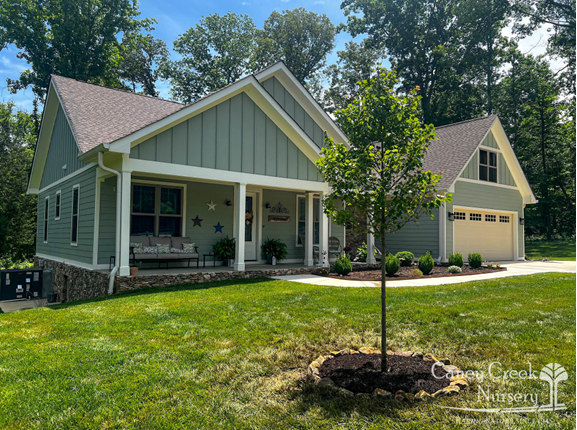Creating a beautiful yard that doesn’t require hours of upkeep each week is the dream for many homeowners. One of the best ways to achieve a low-maintenance landscape is by installing rock mulch combined with sturdy physical edging. This combination not only enhances curb appeal but also helps reduce weed growth and soil erosion while eliminating the need for annual mulching.
Why Choose Rock Mulch?
Unlike organic mulch that needs to be replaced every year, rock mulch is durable, long-lasting, and offers a clean, polished look. The two most popular types of rock mulch for landscaping are:
1. Pea Gravel
Pea gravel consists of small, smooth, rounded stones that are around 3/8 inch in size. It’s ideal for areas that need good drainage and a soft appearance. Pea gravel comes in various earth tones and is often used around walkways, patios, or as a base for container gardens.
2. River Rock
River rock has bigger, rounded stones ranging from ¾ to 1.5 Inches all the way to 6-12 inches in diameter. These stones provide a more dramatic and decorative look, making them perfect for accent areas, dry creek beds, or borders. River rock is also excellent at controlling erosion on slopes or near downspouts.
Installing a Weed-Free Rock Mulch Base
Before adding any type of stone mulch, it’s crucial to prepare the base properly to prevent weeds and ensure longevity. Here’s how:
1. Lay Landscape Fabric
Install high-quality landscape fabric over the area you’re covering. By acting as a barrier, this cloth blocks sunlight and stops weeds from sprouting. Make sure to secure it tightly with sod staples to prevent movement over time.
2. Apply a Pre-Emergent Weed Control
After the rock mulch is installed, apply Preen® or another pre-emergent weed control directly on top of the stones. Water it in to activate the product, which helps prevent new weeds from sprouting through the rocks during the growing season.
Choosing the Right Edging for a Clean Finish
Edging helps define the space, keeps your rock mulch contained, and gives your landscaping a finished, professional appearance. There are three main types of edging commonly used in rock mulch installations:
1. Steel Edging
Metal edging is sleek, strong, and long-lasting. Aluminum choices are rust-resistant and versatile, making them excellent for curving flower beds and borders.
2. Plastic Edging
Plastic edging is an economical and adaptable solution that is easy to install. While it may not last as long as metal, it works well for small garden beds and less trafficked areas.
3. Stone Edging (Natural Stone, Brick, or Pavers)
Stone edging is both decorative and functional. Choose from:
- Natural stone for a rustic look
- Brick for a classic, traditional feel
- Pavers for a modern, clean-lined finish
Stone edging blends beautifully with river rock or pea gravel and creates a timeless border that enhances the landscape’s aesthetic.
Final Thoughts
If you want a low-maintenance, aesthetically pleasing landscaping, using rock mulch and physical edging is a great investment. By choosing the right materials and preparing the base properly with landscape fabric, pre-emergent weed control, and sturdy edging, you can enjoy a polished yard with minimal upkeep for years to come.





